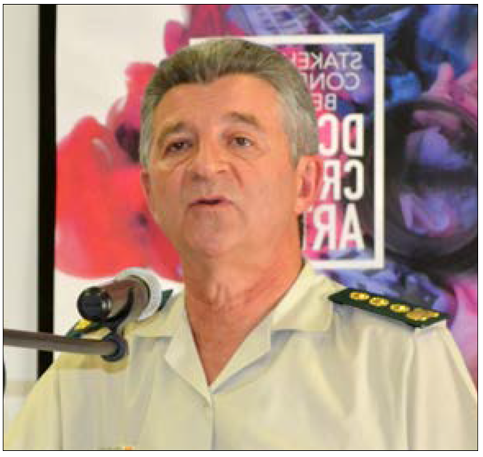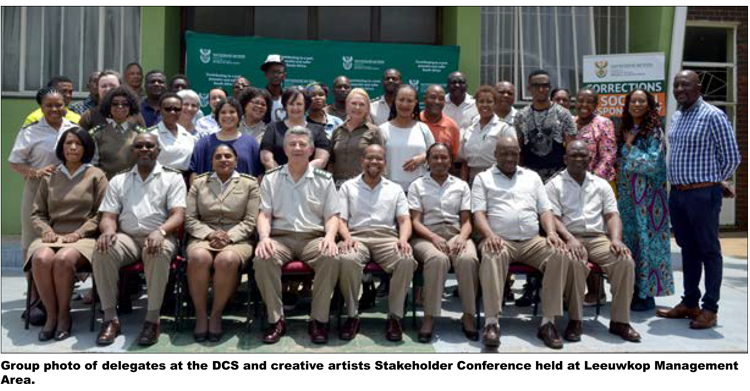 Correctional Services’ business is increasingly becoming an attractive melting pot and source from which many riveting tales originate. The department is inundated with proposals from television production houses and film makers who seek to tell stories about the happenings inside correctional facilities.
Correctional Services’ business is increasingly becoming an attractive melting pot and source from which many riveting tales originate. The department is inundated with proposals from television production houses and film makers who seek to tell stories about the happenings inside correctional facilities.
Arising from these requests, the Directorate Public Education, Stakeholder Relations and Media Services deemed it important to create a platform where creative artists can deliberate on standards that will regulate the relationship between the department and the creative industry. To this end, a stakeholder engagement between DCS and creative artists was held on Monday, 30 October 2017 in Leeuwkop Management Area. The department sought to educate creative artists about legal imperatives that must be satisfied when considering proposals from the media to gain access to correctional centres. In the same vein, creative artists were able to air their views and their experiences in dealing with the department.
Casting his eyes across the hall, acting National Commissioner James Smalberger remarked, “I see faces beaming of vigour and anticipation for the prison gates to open to a dazzling showstopper”. He lamented that Correctional Services and its officials have been isolated from the broader community. Mr Smalberger cited an independent perception survey conducted through Government Communication and Information System (GCIS) as further indication of major strides that have been made to create awareness and educate the public about the mandate of the department. According the survey, the understanding of the South African public of DCS’s key mandate increased from 44.25% (2014/15) to 56% in the financial year 2016/17.
Mr Smalberger encouraged mutual beneficial partnerships with the creative artists’ fraternity that can help create a better understanding of the mandate of DCS. “Of interest to us is stories that document our journey and major developments that continue to redefine rehabilitation as the cornerstone of corrections,” he said. He bemoaned the reputational damage that the department suffers as a result of scenes of ungodly activities inside correctional centres that are circulated by the mainstream media. He implored creative artists to ensure that their productions reflect the reality inside correctional centres. “What is of grave concern to us is a skewed picture depicting correctional centres as a dungeon of lost hope,” said Smalberger. He cited the drama series Lockdown, on DSTV Channel Mzansi Magic as an example.
Pertinent issues raised by creative artists included:
• Turnaround time for the department to provide feedback on proposals submitted
• A need to educate creative artists on proper use of uniform
• Lack of guidelines on dealing with the creative industry
• Fostering partnership with the South African Screen Federation (SASFED), which is an independent umbrella body for film, television and audio-visual content organisations in South Africa
• Formulation of an application process with clear requirements, including a standard application form. Inputs from DCS officials included:
• Developing procedures to be applied in tandem with the Media Access Guidelines to Correctional Facilities in South Africa
• Identify and demarcate the media industry according to streams
• Creative artists should indicate at proposal stage whether the content will be used locally or internationally
• Outline corrective measures in case of misrepresentation of facts by creative artists
• Regular platform of engagement with industry players
• Annexure on applicable media ethics (principles)
• Educate creative artists on the characteristics of an ideal correctional official
The engagement concluded on a positive note with all parties in agreement about the need for regular engagements and strengthening of ties moving forward.

